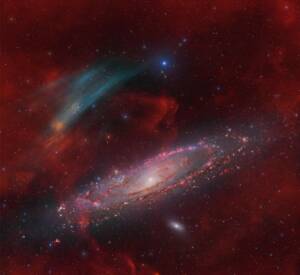
Discovery of the M31 [OIII] emission arc
Recently, a major discovery by an international team of amateur astronomers and scientists has become a huge online hit, and this new discovery is just located in one of the
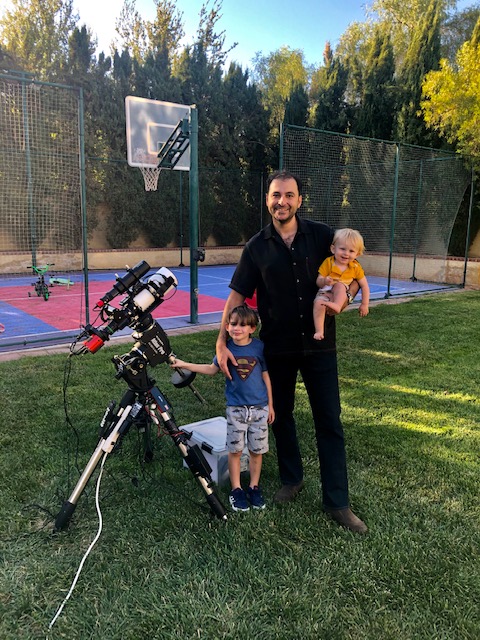
Tim Timrawi is the winner of ZWO 2019 ASIWEEK #39 and has brought us many extraordinary astronomy photos. To make our ZWOers know this excellent astrophotographer better, we make this interview. Let’s all take a look now.
Q1: At first, congratulation that your nice image wins #ASIWEEK. Can you introduce yourself to us?
Thank you for the opportunity you have created with #ASIWEEK, challenging the community to put their best work forward for others to be inspired by the collected images.
My name is Tim Timrawi. I’m originally from Lebanon and currently live in Las Vegas, NV. I’m an IT Professional and run a hosting company with over 20 years experience. I’ve always been drawn to astronomy but never had the chance to put my interest into practice until 2016 when I purchased my first telescope.
Before pursuing this interest I was never drawn to photography and never touched software like Photoshop. My nocturnal nature and my geekiness coupled with my drive for perfection and the wonderous universe made this a perfect hobby and I find I can take advantage of my IT knowledge and my love to troubleshoot unique problems.
I started astronomy around three years ago, and the moment I first saw the rings of Saturn with my own eyes, I was absolutely hooked. The first thing that came to my head is “how can I capture this?!”, and that is when my journey into astrophotography started, slowly into planetary imaging.
Q2: Why do you like astronomy? Can you tell us what astronomy means to you?
We are an infinitesimally small part of a wonderous and a vast beyond-our-ability-to-comprehend universe. The capability to peek through time and space, crossing the vast distances while viewing galaxies that are millions of light years away and the ability to capture the breathtaking beauty of nebulas in our galaxy is extraordinary. The difficulty of this hobby what with battling so many different variables and problems and always feeling like you can do better in acquiring data and processing your image is very appealing to me. In the two years I’ve been in this hobby, I still feel like an amateur with a lot to learn still, and I’m always looking forward to bettering my techniques.
M31, captured with ZWO ASI071MC Pro
Q3: When did you start astrophotography? What equipment did you use then? How about now? Can you show us some images of your setup?
I made the biggest rookie mistake when I first started, but at that point I was completely unaware of where this hobby would take me. I purchased a Celestron Nextstar 8SE then added to that a NexImage10 camera and started working on planetary imaging.
I quickly grew out of planetary imaging due to the limited time window, and the heavily light polluted skies of my area. My next step was upgrading my mount to the Atlas Pro AZ/EQ-G, a refractor Explore Scientific 102mm Triplet FCD1, and an ASI183MC; that is the moment I truly think I got into the hobby. The moment I saw M42 Orion Nebula, I was absolutely hooked.
Now I still have my mount which has been an excellent companion, EdgeHD 9.25, ES 80T FCD100, ASI290MM, ASI290MC, ASI1600MM-P, ASI071MC-P.
Q4: We noticed that you do both planetary and deep-sky photography, can you tell which one do you prefer now? And what are the major differences between them you think?
I am more inclined toward deep-sky photography. They are two entirely different types of photography. I find these days planetary visual observations, especially with guests, is a lot more intriguing than imaging. I still enjoy lunar imaging once a while. The major difference I believe is the consistency of your results. You can be sure of the quality of DSO data you are acquiring on the spot.
M20, captured with ZWO ASI071MC Pro
Q5: What’s the most difficult part of planetary imaging for you? And that of DSO imaging? How do you conquer these problems?
My critical self and trying to impress a difficult audience (my wife) to allow my next upgrade! Las Vegas is one of the most light-polluted cities in the world, but we are blessed with clear skies, very low humidity levels and short travel distance to dark sites away from light pollution. For planetary imaging my most difficult part is re-adjusting my setup from DSO to Planetary, and the frustration the next day with the quality of my data! For DSO light pollution is definitely a big issue, but now with better filters and Narrowband filters make light polluted imaging possible even from areas like mine. I generally image nebulas from my backyard these days and keep my galaxy imaging for my dark-site trips.
IC 1805, captured with ZWO ASI1600MM Pro
Q6: Have you ever traveled to a very dark place to do astrophotography? How was that like? And if not, what’s your favourite place for astrophotography?
Yes! One of the best things we have here in Las Vegas is the ability to get to dark sites within an hour or two travel time. One of my favorite activities is heading out with friends for an astrophotography session at a dark site near Lake Mead. The ability to acquire full RGB data and the ease of the acquisition, or battling some problems and sharing knowledge with friends is always a fun experience over a beer.
M45, captured with ZWO ASI071MC Pro
Q7: As to your winning image, the soul nebula, would you please tell how did you capture it? Would you like to share with us some detailed camera settings?
One of my favorite nebulas, all the data was taken for this image from my backyard under a bortle-6 heavily light polluted skies. I recently acquired an ASI1600MM-Pro replacing my ASI183MM-Pro and an Orion Reducer for my 80mm refractor. I was very pleased to see that I’m able to fit the whole nebula in my image field. Using Optolong Narrowband filters SII, Ha and OIII, I started acquiring 5-minute exposures in Ha during breaks in unusually cloudy skies. After a two-week long trip I came back to my data set and added more exposures and finally was comfortable enough with the quality of my data to finalize. Using Hubble Palette SHO brought out the incredible beauty of the nebula, I kept on going back over my data trying to make it just a bit better. I use a computer stick mounted to my telescope that manages my setup and data acquisition and SharpCap for image capturing. For data processing I use PixInsight and Photoshop. For camera settings I usually setup my camera at -10c, at unity gain and keep brightness at 10 in SharpCap. I enjoy using SharpCap as it helps me ascertain the quality of my data, and it gives me a rough idea on how my data is looking.
Soul Nebula, captured with ZWO ASI1600MM Pro
Q8: When did you know about ZWO? And what’s the first ASI camera you have? Can you tell us your feeling when you get your first ASI camera?
After my first planetary stint and my drive to dive deeper into astrophotography, my first camera was the ASI183MC. This camera genuinely gave me a taste of the beauty of this hobby. The community support, and the consistency of ZWO ASI cameras was absolutely a no-brainer to continue with the ZWO ASI product-line.
Rosette Nebula, captured with ZWO ASI183MM Pro
Q9: Which ASI camera is your favorite? And why do you choose it? Do you have any user experience share to users who wish to buy an astro camera?
That is a very difficult question. I enjoy my ASI1600MM-Pro, also very much enjoy my ASI071MC-Pro, and can definitely see the benefits of ASI183MM-Pro. Each camera has its own set of specialties making it impossible for me to decide on a clear favorite. I generally would use the ASI1600MM for my narrowband imaging, and the ASI071MC for my dark skies imaging.
My advice is being realistic on your main use of the camera, using online tools like https://astronomy.tools/ is your best path to find out which camera fits your setup and what you are mainly going to image best.
NGC7293, captured with ZWO ASI071MC Pro
Q10: Did you know our ASIAIR? If yes, what features do you like? Any new features you like to add?
Yes, I purchased the unit when it first came out. I think it’s an excellent tool for beginners because it would significantly ease your process. My biggest problems with it was cross-vendor compatibility for focusers for example. I hope one day ASIAIR would be available for X86 based systems preferably Windows to be able to use more robust hardware on the system to take advantage of the power available in compute sticks these days.
NGC6888, captured with ZWO ASI071MC Pro
Q11: What’s your impression of ZWO?
ZWO seems to be driven by passionate people able to find smart ways to stream-line products and provide consistency. The least problematic part of my setup is my ZWO camera. Once I’m over the learning curve of a new camera, the camera always performs to its specs and I’ve never had any issues with the cameras. I only hope one day ZWO would open an office in the US to handle RMA to make it a quicker process of repairing a beloved camera! Looking very much forward to the ASI6200 series.
M27, captured with ZWO ASI071MC Pro

Recently, a major discovery by an international team of amateur astronomers and scientists has become a huge online hit, and this new discovery is just located in one of the
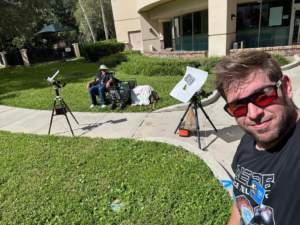
That 11-year-old boy staring at Horsehead Nebula photo would never have imagined… Decades later, he’d be capturing amazing deep-sky images from his Florida backyard! “ It was amazing to see

Hello,Sara Harvey,thanks for accepting our interview invitation. Congratulations on winning the ASIWEEK competition in week! Q1: At first, congratulation that your nice image won #ASIWEEK. Can you introduce yourself to
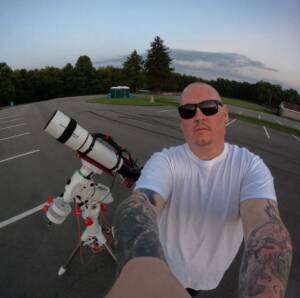
Astrophotography is more than just capturing images of the night sky—it’s a journey of discovery, patience, and creativity. For this passionate astrophotographer, what started as a chance encounter with a
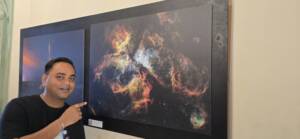
Taranjot Singh, an Indian origin Australian astrophotographer who is making waves on the international stage. Taranjot has been recognized as one of the Top 5 finalists in the prestigious Siena
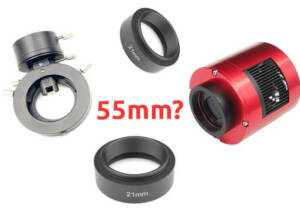
The back focal length is advised by telescope manufacturers. Since most telescopes have a 55mm back focal length, we are here to provide detailed instructions for all ASI cooled cameras.Please